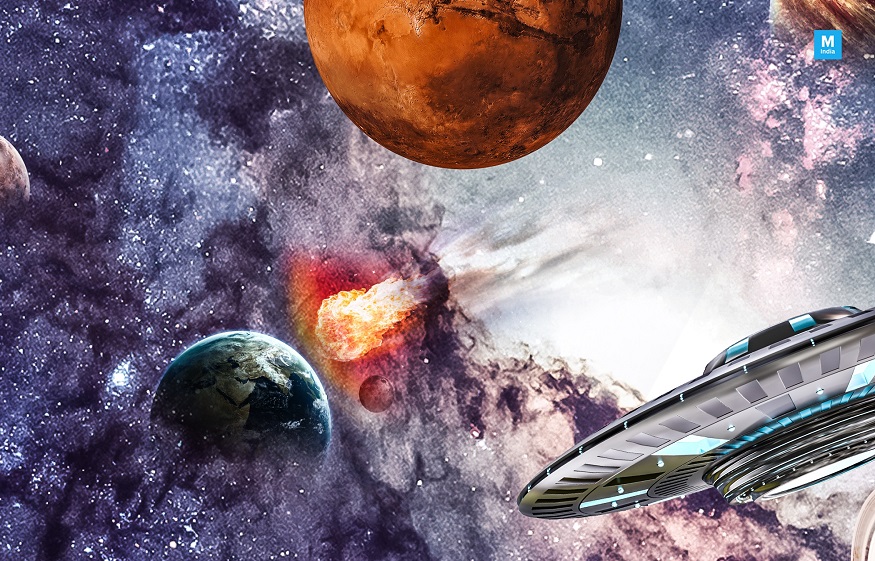
Mars and Titan: on the trail of life
In the early 1950s, the American chemist Stanley Miller undertook to simulate the Earth’s primitive atmosphere in a laboratory. To do this, he designed a glass device, with two balloons connected by tubes. One of the balloons, located at the bottom of the assembly, is filled with water and brought to 80 ° C. Via two tubes, one heated and the other cooled, this balloon is connected to the upper balloon, where two electrodes create electric discharges . In this second flask, S. Miller introduces a mixture of methane (CH4), hydrogen and ammonia (NH3), to which is added the water vapor produced in the lower flask. After several electric shocks, S. Miller carried out a chemical analysis of the contents of the two balloons. There are many organic compounds there,in particular formaldehyde (HCHO), hydrocyanic acid (HCN) and compounds of biological interest, such as amino acids. In short, S. Miller had shown that with a relatively simple molecular soup and energy, it was possible to synthesize the building blocks of living things. It thus paved the way for research into the origins of life both on Earth and elsewhere in the Universe.
It appears that the atmosphere of early Earth was not what S. Miller imagined. More specifically, astronomers today believe that the atmosphere of young Earth must have contained a significant amount of carbon dioxide (CO2), a gas that probably played a key role: it would have maintained a sufficient greenhouse effect for water remains in liquid form on the surface of the young planet. Nevertheless, following S. Miller, numerous experiments made it possible to precisely determine the conditions necessary for the appearance of a prebiotic chemistry, eventually leading to the appearance of living systems.
A first condition is the presence of a tetravalent chemical element – carbon – thanks to which three-dimensional molecules can be formed in space. A second condition is either the presence of molecules of the type introduced by S. Miller in his experiment (for example methane), or the presence of more complex organic molecules, produced in hydrothermal vents, or delivered to Earth by comets. or meteorites. A third condition is a solvent in which chemical reactions take place. Water is suitable because of its polar bonds (due to the electronegativity of oxygen atoms), which offer many possibilities to react. Finally, a source of energy, solar or chemical, is necessary in order to
Born of methane and nitrogen
However, the precise conditions that led to the appearance of life on Earth, at least 3.8 billion years ago, are far from having been determined. The clues that could have put us on the way have disappeared because of the turbulent geological history of our planet and the activity of living organisms which destroyed all traces of the original molecules.





